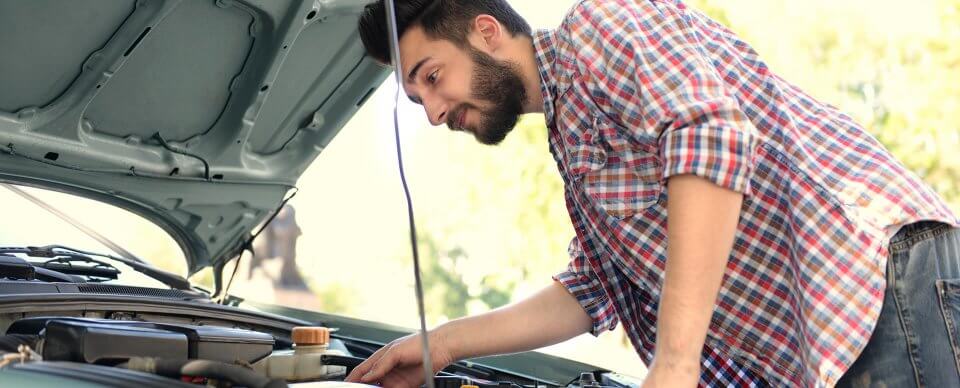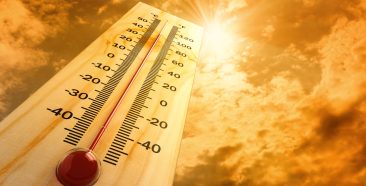
In a world of free tutorials and how-to articles, there seems to be more people than ever engaging in do-it-yourself (DIY) activities. Now, you can do the same with DIY car maintenance. By completing car maintenance tasks yourself, you’ll save time and money. Plus, it can be rewarding. Check out these six auto maintenance fixes you can do yourself.
1. Buff out Scratches
You may be able to buff out small car scratches on your own. There are many products on the market that can aid in car scratch removal, but one DIY scratch removal product everyone has on hand is toothpaste. Start by making sure the area you’re going to work on is clean and dry. Then, add a dab of whitening toothpaste to a damp, soft cloth. Rub the toothpaste onto the scratch or scuff mark using a small, circular motion to cover its surface and continue until the scratch is gone. This method works best if the scratch or scuff mark hasn’t fully penetrated the clear coat of your vehicle’s paint. If the scratch is deeper than that, you may want to consider having it repaired by a professional.
2. Fix Window Chips
Window and windshield chips are unsightly and can be dangerous if not fixed right away. If your windshield has a small chip with minimal or no cracks, you might be able to fix it yourself. To do this, get a repair kit from your local auto parts store or online. Windshield repair kits typically come with everything you need to repair small windshield chips. Within an hour or so, you should see the desired results.
3. Change Your Headlight
You don’t want to get a fix-it ticket that reads “change headlight” when you could easily replace your headlight before a cop stops you. Visit the closest auto parts store and purchase the light that is designated for your vehicle. The steps for changing a headlight are as follows:
- Open the hood and look for the light bulb holder
- Remove the wire harnessing from the bulb holder
- Pull the bulb out of the holder
- Holding the new bulb by the plug end, use a clean rag to wipe down the bulb
- Without touching the surface of the bulb, stick the bulb into the back of the headlight (the rubber gasket will not be showing if the bulb is installed properly)
- Plug in the wiring and re-secure the bulb
- Lastly, check to make sure it works and you’re done
You also have the option to ask the auto parts attendee if he or she can change the bulb for you. Most will do it at no cost.
4. Replace the Windshield Wipers
Before the next storm hits, you want to make sure your windshield wipers are in excellent working condition. It’s highly recommended that your windshield wiper blades are replaced every 6 months to a year. You can purchase windshield wiper blades at your local auto parts store; make sure to ask the attendee which blades are right for your vehicle if you don’t already know. For most vehicles, simply flip the lower part of the windshield wiper up, unhook the old blade, slide the new blade in, then flip the wiper back to its original position. Do the same for the other side and voilà, you’re all set for the next time wet weather hits your city.
5. Inflate Your Tires
If you have a newer vehicle, you may notice a warning light on your car dashboard with an exclamation point and ridges at the bottom. This light means “check tire pressure” and if the light comes on and stays on, it could mean that one or more of your tires are low on air. Begin by checking the driver’s side doorjamb for a sticker that lists recommended tire pressure for your vehicle. Then, check the tire pressure of each tire using a tire pressure gauge to determine which tires need air. Visit a nearby gas station and use the air machine to fill your vehicle’s tires to the recommended PSI, and that’s it. Most gas station attendees will turn on the air for free at your request, but some may require you to pay a fee or purchase something before turning it on. Either way, you’re looking at getting your tire inflation issue fixed for little to no money and in just a few minutes.
6. Change Your Air Filter
Unlike the tire pressure warning light, there’s no light for “check air filter,” so you want to make sure your air filter is checked regularly. An engine air filter with lots of dirt and dust affects the air quality in your car, but you can easily prevent a dirty air filter by changing it on your own. Start by purchasing the recommended air filter for your vehicle at your auto parts store. To replace it, pop open the hood, locate the current air filter under a black case, and remove it by opening the clips on either side of the case (you may need to use a screwdriver, depending on your vehicle). Put the new filter in and ensure it’s been placed correctly, then close the case and secure the clips.
We hope you’re able to use some of these helpful car tips on your vehicle in the near future. These are minor auto tips you can easily do yourself, but if you find yourself dealing with huge repairs due to an accident, you’ll need the help of an affordable auto insurance company. We can get you covered today. Request a free auto insurance quote right now, online or over the phone at (800) 777-5620. Our helpful agents can get your vehicle insured for a great rate. Get started today with Freeway Insurance.



